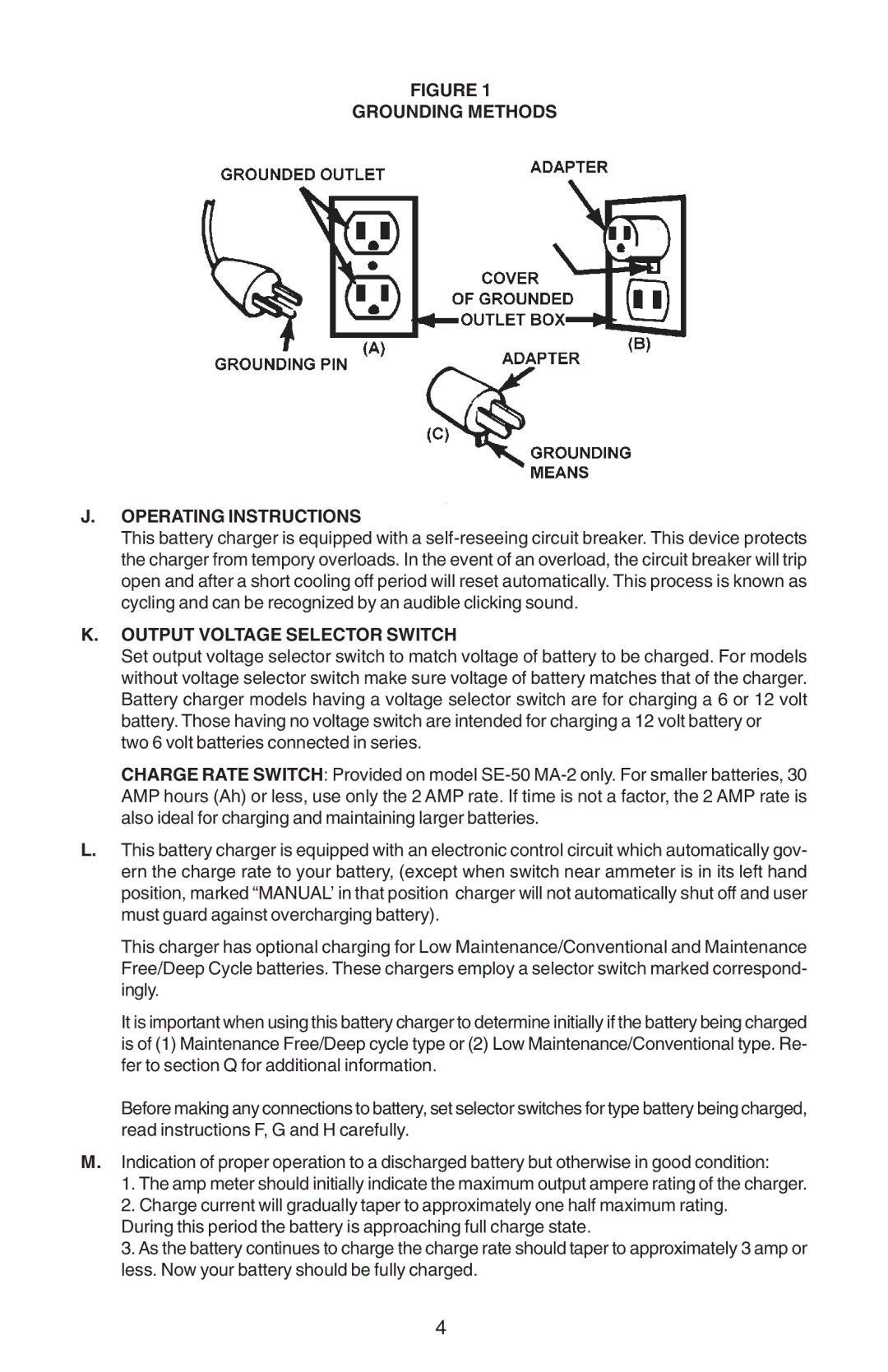
FIGURE 1
GROUNDING METHODS
J.OPERATING INSTRUCTIONS
This battery charger is equipped with a
K.OUTPUT VOLTAGE SELECTOR SWITCH
Set output voltage selector switch to match voltage of battery to be charged. For models without voltage selector switch make sure voltage of battery matches that of the charger. Battery charger models having a voltage selector switch are for charging a 6 or 12 volt battery. Those having no voltage switch are intended for charging a 12 volt battery or two 6 volt batteries connected in series.
CHARGE RATE SWITCH: Provided on model
L.This battery charger is equipped with an electronic control circuit which automatically gov- ern the charge rate to your battery, (except when switch near ammeter is in its left hand position, marked “MANUAL’ in that position charger will not automatically shut off and user must guard against overcharging battery).
This charger has optional charging for Low Maintenance/Conventional and Maintenance Free/Deep Cycle batteries. These chargers employ a selector switch marked correspond- ingly.
It is important when using this battery charger to determine initially if the battery being charged is of (1) Maintenance Free/Deep cycle type or (2) Low Maintenance/Conventional type. Re- fer to section Q for additional information.
Before making any connections to battery, set selector switches for type battery being charged, read instructions F, G and H carefully.
M.Indication of proper operation to a discharged battery but otherwise in good condition:
1.The amp meter should initially indicate the maximum output ampere rating of the charger.
2.Charge current will gradually taper to approximately one half maximum rating.
During this period the battery is approaching full charge state.
3.As the battery continues to charge the charge rate should taper to approximately 3 amp or less. Now your battery should be fully charged.
4
